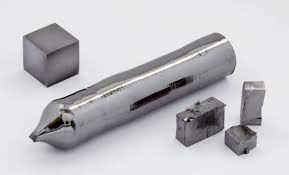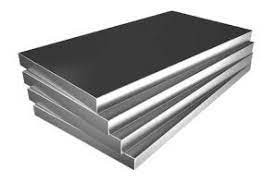Tantalum is a rare refractory metal with high melting point, low vapor pressure and small thermal expansion coefficient. Because the surface of tantalum can easily form a dense and stable protective film of tantalum pentoxide (ta2o5), it shows exceptional corrosion resistance. It does not react to hydrochloric acid, concentrated nitric acid and aqua regia regardless of whether it is cool or warm. Tantalum is inactive to alkali solutions, chlorine gas, bromine water, thin down sulfuric acid, and many other chemicals at room temperature. In addition, tantalum and its alloys have good high-temperature strength, processing properties, welding properties, and thermal conductivity properties. In view of its good comprehensive properties, tantalum has broad application prospects in electronics, chemical industry, aerospace, weapons and other fields. Although tantalum has many excellent properties, its resource occupancy in the earth’s crust is small, and its symbiosis with other metal elements makes it difficult to smelt and extract, making it expensive and limiting its wide application. Tantalum steel composite materials are based on steel plates with low cost and good processing performance, and tantalum with excellent corrosion resistance is used as composite plates. This not only solves the problem of tantalum’s expensive price restricting its use, but also makes full use of tantalum’s ability to perform in some highly corrosive environments. Advantages under working conditions (such as high temperature dilute sulfuric acid, hydrochloric acid, nitric acid, etc.).
The Chinese Utility Model Patent (Application No. 201220472919.7) discloses a method for preparing tantalum steel composite panels using explosive welding. The explosive composite method uses the huge energy generated by explosives at the moment of explosion to accelerate two metal plates to a very high speed and then collide rapidly for welding. However, the production noise is high, waste gas pollution is generated, and the requirements for the production site are very high. It is not suitable for production in urban areas. The strength of the composite interface is uneven, and it cannot produce thin and large-area plates and cannot meet the requirements of continuous production.
The hot rolling composite method is to roll the composite billet above the recrystallization temperature of the composite billet to produce a large amount of deformation and to complete the composite of dissimilar metal billets under the combined action of heat and force. The hot rolling equipment and process are simple, and the working environment is good. It has a wide range of product sizes, which is the main development direction of composite panel production in the future.
Background technique:
Chemical equipment refers to machinery whose main functional parts are stationary or have little movement, such as various containers (such as tanks, tanks, kettles, etc.), ordinary kilns, towers, reactors, heat exchangers, ordinary dryers, and evaporators. , reaction furnace, electrolyzer, crystallization equipment, mass transfer equipment, adsorption equipment, fluidization equipment, general separation equipment, ion exchange equipment, etc. For chemical equipment that stores or transports corrosive media, high pressure resistance, corrosion resistance and sealing performance are all crucial, such as corrosion-resistant heat exchanger tube sheets, outer covers in containers, and flanges in media delivery pipelines disk etc.
In recent years, with the continuous development of technology, the corrosion resistance requirements of chemical equipment have also been continuously improved. As the most ideal corrosion-resistant metal material, tantalum materials have more and more market demands. Metal tantalum and its alloys have high density, high melting point and excellent corrosion resistance. They also have good high-temperature strength and good processability. They are widely used in electronics, chemical industry, aerospace, weapons and other fields. In the field of chemical industry, tantalum is an ideal corrosion-resistant material, especially under some strong corrosive and harsh working conditions (such as high-temperature dilute sulfuric acid, hydrochloric acid, nitric acid, etc.). Tantalum has good corrosion resistance and stability that other metals cannot replace. sex.

However, many characteristics of tantalum materials restrict its promotion and application, which are mainly reflected in the following three aspects: First, it is dense and expensive. The price of tantalum is about 40 times that of titanium and 7 to 8 times that of zirconium. , so that few people use pure tantalum to make chemical equipment; secondly, tantalum is a refractory material with a melting point of 2996°C, which is quite different from ordinary metal materials, and it is difficult to weld with other metals; thirdly, tantalum can be used Most of the chemical equipment made of materials is in a highly corrosive medium environment. Once a leak occurs, it is easy to cause a safety accident. Therefore, how to improve the promotion and application of tantalum materials depends more on reducing costs and improving equipment reliability.
Limited by the cost and processing level of tantalum plates, most chemical industry applications are combined with steel. At present, the following two methods are widely used: the first is tantalum and steel composite plate structure, and the second method is tantalum and steel plate closely padded structure.
Among them, the first method is to laminated the tantalum plate with the steel plate through a transition material (usually titanium, copper or nickel plate) through explosion or rolling. This structure has a tighter bonding between metals and can. It forms a higher strength, so it is currently the most reliable structure, especially suitable for occasions with vacuum; however, its composite cost is high, and the later welding structure requires the composite of thicker tantalum plates, making this method the most expensive.
The second method is to cover the tantalum plate on the steel plate and fix it on the steel layer through peripheral silver brazing or flanging. When there is a through hole, add a section of liner to expand and fix the liner to the steel layer. Welding with the tantalum layer; when the tantalum layer is subjected to external pressure, tantalum screws are generally pre-set on the steel layer in areas without through holes. After the tantalum layer and the steel layer are covered, the tantalum screws are plug-welded. The layer is fixed to the steel layer and can withstand a certain external pressure in a certain area. In addition, the thickness of the tantalum plate in this method is generally not greater than 1mm, and there is no need for explosion or rolling lamination, and the cost is greatly reduced, however, often, due to the instability of the liner expansion joint quality and the pressure source, the liner expansion joint fails, causing the tantalum plate layer to withstand an external pressure much higher than the design. Eventually, the tantalum plate deforms and fails, and the corrosive medium enters the steel layer. , causing the entire equipment to be scrapped. In order to prevent this situation, the current method used is to cover both sides of the steel plate and the steel cylinder, flange and sealing surface connected to the steel plate with a tantalum layer. Although the pressure source is prevented from affecting the tantalum layer in contact with the corrosive medium. A large external pressure is formed, but this method directly causes an increase in cost and the difficulty of processing.

Supplier
TRUNNANO is a supplier of tantalum steel clad plate and other relative materials with over 12 years experience in nano-building energy conservation and nanotechnology development. It accepts payment via Credit Card, T/T, West Union and Paypal. Trunnano will ship the goods to customers overseas through FedEx, DHL, by air, or by sea. If you are looking for high quality clad plate please feel free to contact us and send an inquiry.
